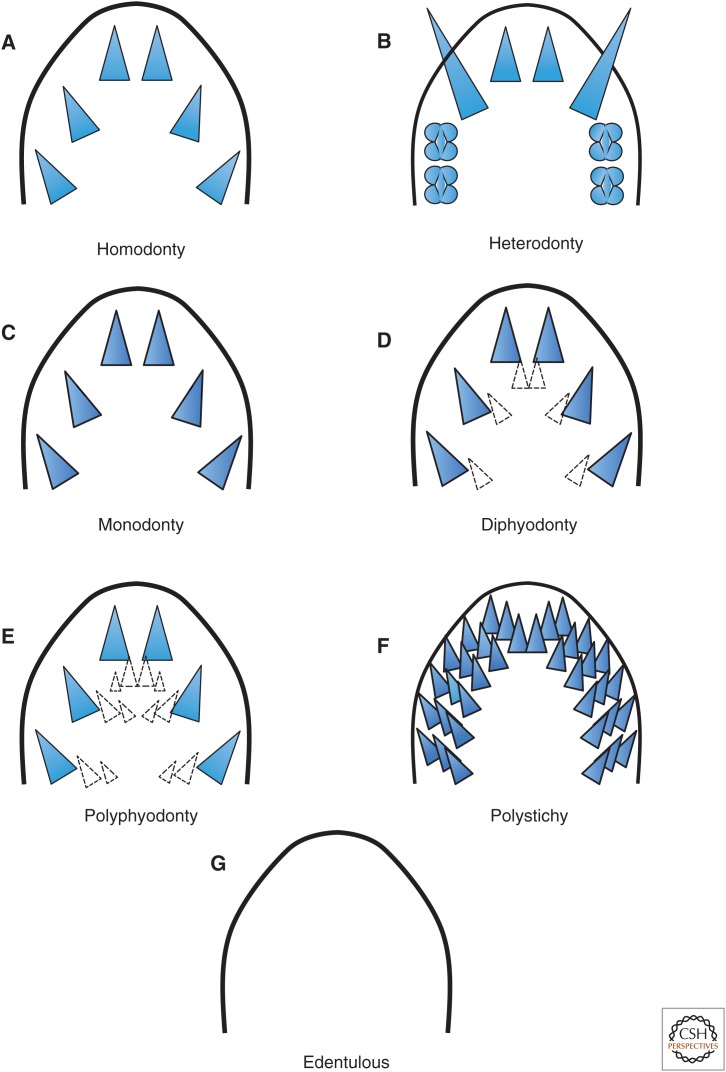Figure 3.
Common patterns of teeth in vertebrates. Teeth in vertebrates are variable within clades in shapes, patterns of arrangement on the jaws (or other elements), and numbers of both teeth and the rows in which they occur in adults. (A) Homodonty: all teeth in a row the same shape (many fishes, amphibians, reptiles). (B) Heterodonty: teeth different shapes in a row (e.g., the incisors, canines, and molars of many mammals). (C) Monodonty: a single row of functional teeth. (D) Diphyodonty: two sets of teeth, a juvenile dentition that is replaced by an adult set (e.g., many mammals, including humans). (E) Polyphyodonty: multiple rows of teeth (or patches) with teeth being shed and new teeth developing from adjacent loci to replace them throughout life (e.g., most fishes, amphibians, and reptiles). (F) Polystichy: multiple rows of teeth with several rows of functional teeth accumulated on the jaws (or in patches) without being serially shed (e.g., sharks). (G) Edentulous: tooth development suppressed (e.g., some frogs, birds). Note that A, B, C, and G may not involve replacement, depending on the lineage. Functional teeth are blue; replacement teeth in loci are white.

